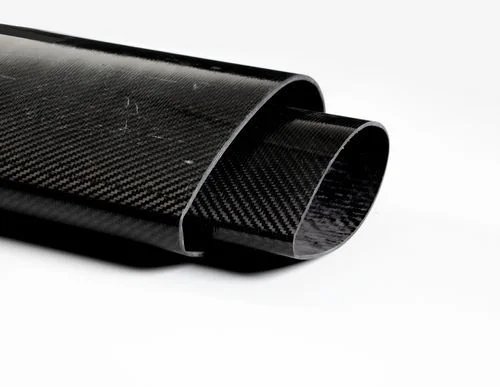
Choosing the right resin for an oval carbon fiber tube matters more than you’d think. Customers often get hung up on fiber orientation or tube dimensions—like picking a 1 inch square carbon fiber tube or a 20mm carbon fiber square tube—but the resin? That stuff holds the whole thing together. Resin determines how the fiber performs under stress, heat, and wear. It shapes the tube’s final weight, finish, and even price.
Why Resin Matters in Tube Manufacturing
Resin isn’t just glue. It’s what binds carbon fibers into one solid form. With bad resin, even the best 1.25 carbon fiber tube will crack early or warp with heat. With good resin, a 1/2 inch carbon fiber tube can take a beating without blinking.
Oval tubes often deal with uneven stress. That means resin choice must fit the job, whether you’re building bikes, drones, or aerospace brackets.
Resin Choice Based on Viscosity
Viscosity changes everything. A resin that’s too thick won’t wet the fibers right. Too thin? It might flood the mold and bubble under pressure. That’s why for tight builds—like a 2mm carbon fiber tube or a snug 10mm square carbon fiber tube—medium viscosity works best. It soaks evenly and fills tight curves.
For larger tubes, say a 2 inch carbon fiber tube or 19mm carbon fiber tube, a higher-viscosity resin may help reduce sagging in vertical molds. But again, it’s a balance.
Epoxy-Based Resins
Epoxy is the king for strength. Epoxies resist fatigue better than most. If your application involves vibration—like RC drones or sport gear—a 14mm carbon fiber tube with epoxy will last longer than a polyester match. They also bond better with the fiber, giving more consistent strength throughout.
Epoxy costs more but pays off in lifespan. If you’re after a 12mm carbon fiber tube for high-performance setups, this is your go-to. It’s what pros prefer when failure isn’t an option.
Polyester-Based Resins
On the cheaper end, you’ve got polyester. It works, but it doesn’t flex well. A 16mm carbon fiber tube built with polyester might seem fine until the first heat cycle warps it. For display parts or low-load jobs, polyester gets the job done. But not for parts that live hard.
The upside? It cures fast. If you’re pushing volume on less critical builds—like simple 13mm carbon fiber tube spacers—it might be enough.
Vinyl Ester Resins
Vinyl ester hits the middle ground. More flexible than polyester, less costly than epoxy. For folks seeking strength with a bit of chemical resistance, this works. Think of it for marine or humid environments. A 22mm carbon fiber tube for underwater drones or structural arms might benefit from this combo.
Vinyl esters also do well with UV exposure. For outdoor applications, like a carbon frame using a 20mm carbon fiber tube, you get fewer yellowing issues.
What’s the Right Resin for You?
That depends on how and where you’ll use your tube. Here are a few examples:
High-impact or repeated vibration? Go with epoxy. Best bet for a 1.5 carbon fiber tube on a racing drone.
Budget build with low structural demand? Polyester saves cash, especially on wide parts like a 1 inch square carbon fiber tube.
Mid-grade with better environmental toughness? Vinyl ester holds up better outdoors, especially for open-frame rigs using 18mm carbon fiber tubes.
Conclusion: Resin Choice Shapes Performance
Don’t just pick a size—like a 1/2 carbon fiber tube or 20mm carbon fiber tube—and think the job’s done. Resin choice defines whether the final product will stand strong or fail quietly under heat, pressure, or time.
For oval carbon fiber tubes in particular, where forces twist and flex across odd curves, resin isn’t a background detail. It’s the star. Selecting the right base—epoxy, polyester, or vinyl ester—along with the right viscosity, saves time, waste, and long-term headache.
Customers serious about quality never ignore the resin. They ask, test, and choose smart. That’s how a 13mm carbon fiber tube survives years of action or how a 1.25 carbon fiber tube stays firm under speed.
References:
1. How To Cut Carbon Fiber Tubes: Key to Tolerance and Customer Relationships
2.How We Helped Our Client Solve Product Issues with Our Carbon Fiber Tubes?
3.Can Carbon Fiber Tubes Be Mass-Produced? Here’s What You Need to Know
4.How to Improve the Surface Quality of Large Diameter Carbon Fiber Tubes
5.How to Make a Roll Wrapped Tapered Carbon Fiber Tube?


One Response